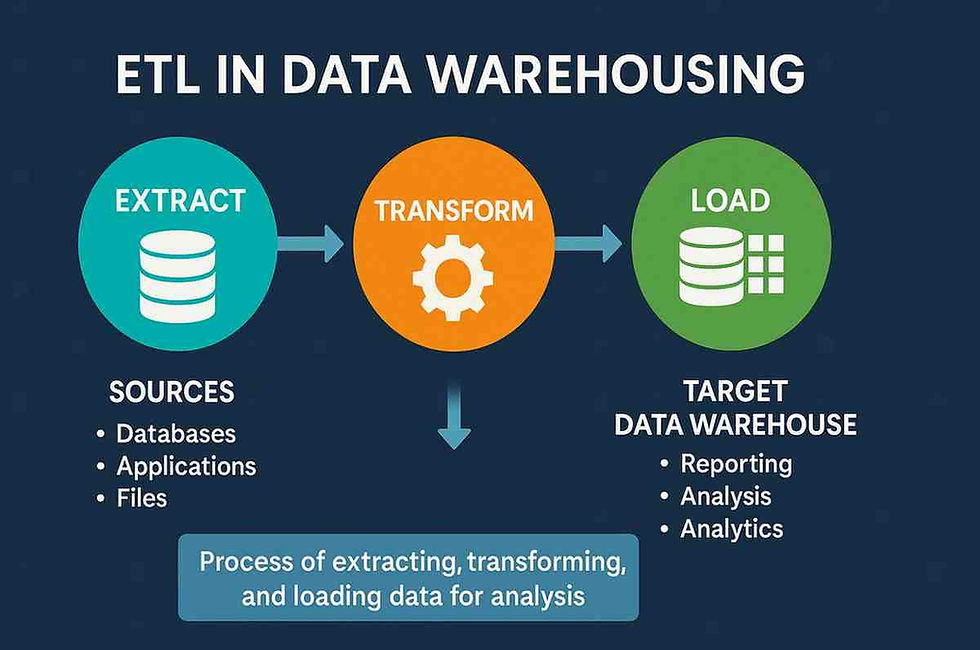Postman vs JMeter: Key Differences Explained
- Gunashree RS
- Jan 27
- 5 min read
Introduction
When it comes to software testing, especially API and performance testing, tools like Postman and JMeter are among the most popular choices. Both tools have distinct capabilities that cater to different aspects of testing. If you're a developer or tester trying to decide which tool to use, understanding the differences between Postman and JMeter is essential.
Postman is widely known for its user-friendly interface and its focus on API development and testing. On the other hand, JMeter is a robust tool primarily used for load testing and performance testing of web applications. In this comprehensive guide, we’ll dive deep into the key features, benefits, and use cases of Postman and JMeter to help you determine which tool is better suited for your specific needs.

Overview of Postman and JMeter
Postman and JMeter are both powerful tools but are designed for different purposes. While Postman primarily focuses on API testing, JMeter is widely used for performance and load testing.
Postman is ideal for API development and testing workflows, offering a user-friendly interface for designing, testing, and documenting APIs.
JMeter, on the other hand, is an open-source tool used to test the performance of web applications and simulate high loads to determine application behavior under stress.
What is Postman?
Features of Postman
API Testing: Postman allows you to test RESTful, SOAP, and GraphQL APIs.
Collaboration: With Postman workspaces, teams can collaborate on API development.
Automation: Postman supports test automation with Newman, its CLI tool.
Built-in Debugging Tools: The Postman console helps debug API requests and responses.
API Documentation: It generates detailed and shareable documentation for APIs.
Use Cases of Postman
Designing and Testing APIs: Simplifies the creation, testing, and debugging of APIs.
Mock Servers: Developers can create mock servers to test APIs without backend implementation.
API Monitoring: Ensures that APIs are functioning correctly through scheduled monitoring.
What is JMeter?
Features of JMeter
Performance Testing: JMeter is designed for load and stress testing of web applications.
Protocol Support: It supports multiple protocols like HTTP, HTTPS, FTP, JDBC, and more.
Extensibility: Plugins and scripting capabilities make JMeter highly customizable.
Graphical Analysis: Provides detailed reports and graphs for performance metrics.
Open Source: JMeter is free to use and has an active community for support.
Use Cases of JMeter
Load Testing: Simulates concurrent users to evaluate application performance.
Stress Testing: Tests how the system behaves under extreme load conditions.
Functional Testing: Verifies the correctness of application features using JMeter scripts.
Key Differences Between Postman and JMeter
a. Focus Area
Postman: Focuses on API testing, development, and monitoring.
JMeter: Specializes in performance testing and load testing of applications.
b. User Interface
Postman: Has a user-friendly, intuitive graphical interface suitable for beginners.
JMeter: Features a more complex interface that may require a learning curve.
c. Protocol Support
Postman: Primarily supports API protocols like REST, SOAP, and GraphQL.
JMeter: Supports a wide range of protocols, including HTTP, FTP, SMTP, and JDBC.
d. Performance Testing
Postman: Limited performance testing capabilities, mainly for API response times.
JMeter: Designed for extensive performance and load testing.
e. Scripting and Customization
Postman: Basic scripting capabilities with JavaScript for API tests.
JMeter: Advanced scripting using Groovy and BeanShell for complex scenarios.
Postman vs JMeter: Use Case Comparison
Criteria | Postman | JMeter |
Primary Purpose | API testing and development | Load and performance testing |
Ease of Use | Beginner-friendly | Requires technical expertise |
Protocol Support | Limited to API protocols | Wide range of protocol support |
Scripting | JavaScript-based | Groovy and BeanShell |
Best For | API development, testing, and debugging | Load, stress, and performance testing |
Advantages of Using Postman
Easy to Use: Its intuitive interface makes it beginner-friendly.
Collaboration Features: Postman allows teams to work together on APIs.
Automation Ready: Test scripts can be automated using Newman.
Real-Time Monitoring: Ensures API uptime and performance.
Rich Documentation: Automatically generates and updates API documentation.
Advantages of Using JMeter
Open Source: JMeter is free to use and widely supported by the community.
Scalability: Can simulate thousands of users for realistic load testing.
Protocol Diversity: Supports multiple protocols beyond HTTP/HTTPS.
Detailed Reports: Provides comprehensive metrics and analysis.
Extensibility: Custom plugins and scripting options for complex scenarios.
Limitations of Postman
Limited Performance Testing: Postman cannot handle large-scale load testing.
Protocol Restriction: Only supports API protocols like REST and SOAP.
Steep Pricing for Teams: Advanced collaboration features come at a cost.
Limitations of JMeter
Complex Interface: The UI is not as user-friendly as Postman.
Learning Curve: Requires technical expertise to use effectively.
Resource-Intensive: High resource consumption during large-scale tests.
Which Tool Should You Choose?
Choosing between Postman and JMeter depends on your project requirements:
Choose Postman: If your focus is on API development, debugging, and testing. Postman is ideal for developers and testers working on APIs.
Choose JMeter: If you need to perform load testing, stress testing, or analyze application performance under heavy traffic.
In many cases, both tools complement each other, with Postman used for API testing and JMeter for performance testing.
FAQs
1. What is Postman used for?
Postman is used for API development, testing, debugging, and monitoring.
2. What is JMeter used for?
JMeter is used for load testing, performance testing, and stress testing of web applications and servers.
3. Can Postman perform load testing?
While Postman can handle basic API response testing, it is not designed for large-scale load testing.
4. Is JMeter suitable for beginners?
JMeter has a steep learning curve and may not be ideal for beginners without prior technical expertise.
5. Are both Postman and JMeter free?
Postman offers a free version with limitations, while JMeter is entirely open-source and free to use.
6. Can I use Postman and JMeter together?
Yes, Postman and JMeter can be used together. Postman can test API functionality, while JMeter handles load and performance testing.
Conclusion
Postman and JMeter are powerful tools catering to different needs in the software testing lifecycle. Postman excels in API testing and development, offering simplicity and robust collaboration features. JMeter shines in performance and load testing, providing scalability and comprehensive metrics.
While Postman is suitable for developers focused on API workflows, JMeter is the go-to tool for testing application performance under heavy traffic. By understanding the key differences and capabilities of each tool, you can choose the one that aligns best with your project’s requirements.
Key Takeaways
Postman is ideal for API development, testing, and monitoring.
JMeter specializes in load testing and performance analysis.
Postman is user-friendly, while JMeter has a steeper learning curve.
The choice between the two depends on your testing goals: functionality vs performance.
Both tools can be complementary for comprehensive testing.




U888 không chỉ là sân chơi giải trí mà còn là nơi kết nối cộng đồng người chơi có cùng đam mê. Hệ thống 1u888com com hỗ trợ khách hàng 24/7 với đội ngũ chăm sóc chuyên nghiệp. Tham gia ngay hôm nay qua link truy cập hợp lệ https://iszene.com/user-250644.html
qh88 là sân chơi cá cược đổi thưởng trực tuyến hàng đầu, mang đến trải nghiệm giải trí đẳng cấp và cơ hội trúng thưởng hấp dẫn. tham gia ngay qh88 để khám phá link chính thức qh88 rsvp, nơi đam mê và may mắn hội tụ trong từng ván cược.
Gia nhập ngay LC88 để nhận thưởng nạp đầu cực khủng 18.888K và trải nghiệm môi trường cá cược an toàn – minh bạch. Đăng ký tại https://lc8800.com/ để tham gia ngay hôm nay. Lc8800 com cam kết mang đến hệ thống hiện đại, bảo mật tuyệt đối và nhiều khuyến mãi hấp dẫn dành riêng cho người chơi Việt.
mm888.media là nền tảng truyền thông chính thức của mm888 media, nơi cập nhật link truy cập và thông tin mới nhất về MM88 – nhà cái trực tuyến uy tín, bảo mật và chuyên nghiệp hàng đầu Việt Nam.
OK8386 là điểm đến cá cược trực tuyến uy tín dành cho cộng đồng yêu thích giải trí và săn thưởng. Truy cập ok8386a com hoặc truy cập trực tiếp https://ok8386a.com/ để tham gia nhiều tựa game hấp dẫn với ưu đãi giá trị.